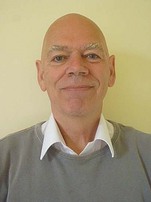Chapter 13 E-materials
Author profiles
Appendix 13.1 Self-attribution and problem solving
A Physiotherapist solves the problem/tells the patient what to do
Patient: ‘Oh, is it? I feel much sorer than last week’.
Physiotherapist: ‘That looks pretty tense, try relaxing, do it slower, keep breathing’.
Patient: (continues as above) ‘Yes, I’m trying to relax, but I can’t’.
Physiotherapist: ‘Yes good, but you need to let your shoulders relax down more’.
B Patient encouraged to recognise his achievements and problem-solve
Patient: ‘Oh, is it? I feel much sorer than last week’.
Patient: ‘Well, I don’t know, that’s why I asked you!’
Physiotherapist: ‘What makes it particularly sore?’
Physiotherapist: ‘That’s a good link to have made. What do you think could help?’
Patient: ‘Well, I’m trying to relax, but it’s not easy’.
Physiotherapist: ‘What are you feeling?’
Patient: ‘Well I’m trying to relax my shoulders’.
Physiotherapist: ‘Yes, I can see that, that’s good. Anything else?’
Patient: ‘It’s tight round here (touches right C1 area) and actually that’s where it’s really sore’.
Patient: ‘Yes, it’s been stiff a long time, so I suppose that’s pretty good!’
NB Notice how both physiotherapists acknowledged the pain without reinforcing the pain talk.
Appendix 13.2 SMARTER goal setting
Specific ‘What’ and ‘how much’ to do to clarify what is being aimed for.
Appendix 13.3 Unhelpful cognitions or habits of thinking
• All or nothing thinking: ‘If I don’t get finished in time, I’m a complete failure’ (feel hopeless).
• Mental filter (believing that one negative feature of a situation characterises it all): ‘The bus conductor annoyed me, it’s ruined the whole day’ (feel angry).
• Mind-reading (believing yourself to be thought of negatively by others): ‘The physiotherapist must be thinking I’m not trying’ (feeling anxious).
• Catastrophising (believing things to be worse than they are): ‘My shoulder’s hurting again, I must have really injured it, I won’t be able to manage work for weeks, I may lose my job’ (feel worried, desperate).
• Should-statements (believing that your standards expressed as should, ought to, must and have to, are fixed absolutes – also called ‘musturbation’!): ‘I should be able to manage lifting that weight/I must finish all my typing today/the physiotherapist ought to be helping me more’ (feel exasperated, desperate, angry).
• Labelling (believing yourself or others to be defined by one or more acts): ‘It’s really pathetic I can’t lift my leg, I’m a real wimp’ (feel annoyed, a failure).
Appendix 13.4 Cognitions in a social exercise setting – alternative cognitions & problem solving
The patient has stopped going to the gym. She thinks to go again she:
• Has to be as fit as others in the class or she will hold things up.
• Has to be able to do the whole class.
• Can’t start until she has lost weight, and has a new track suit.
• Can’t go until she feels her old fun self to join in with the banter and go out after for a coffee with her group of friends (should statements).
• Go and talk to the class instructor about what has happened and how she will start with just part of the class or the easier exercises to start with.
• Borrow her sister’s Nintendo Wii Fit to get started and build confidence.
• Ring her friends and explain her situation to them.
• Remind herself how another friend tackled returning to the class after a bereavement/an operation: what seemed to work for her.
Appendix 13.6 Misunderstandings or conflicting beliefs
Physiotherapist: ‘You have pulled a muscle in your leg so it needs exercise to help it heal up’.
Case Study 13.1
Background
She wears a scarf wrapped around her neck and reports wearing an old neck collar at night.
Treatment
• Reassurance that her neck is healthy, just very sore as she has been in an RTA. Similarly the muscles at the front of her throat would have been yanked on as her head was not fully stopped by the headrest.
• Acknowledgement of her pain: muscle spasm can be extremely sharp and painful, and pain and sensitisation following injury is normal but pretty unpleasant. Her throat likewise is normal; the lump will be the sensitisation as well as perhaps some muscle spasm though this should settle when normal movement is regained.
• Given a brief explanation of post-injury sensitisation in the CNS, and that the neck is immensely strong: touch and normal movements are not damaging even after a whiplash. The pain is not a sign of further damage; pain worse later rather than immediately is hypersensitivity – just as happens with sunburn. The process of healing briefly explained, with the need for gentle then progressive movement to reduce pain, limit stiffness and muscle spasm and encourage strong repair.
• She is now at the subacute stage however so encouraged to start moving as normally as possible, as this would NOT cause more damage and would help speed up tissue recovery. Taught to do gentle relaxing movements to other joints first then to the affected joints: helping the muscles to be more relaxed when beginning painful movement. Now it is not acute she is encouraged to try out both heat and ice: which works best to reduce the pain and spasm? Encouraged to build up her general activity: take the stairs to her 4th floor flat, not the lift.
• Since immobilisation increases pain and encourages muscle spasm on movement, she was praised for getting up in the night and encouraged to use this, together with relaxation and regular changes in position as a strategy until the pain eases further. Her sleep is interrupted so she was reassured relaxation and rest are almost as good and she would soon find she could sleep for longer.
Stay updated, free articles. Join our Telegram channel

Full access? Get Clinical Tree










